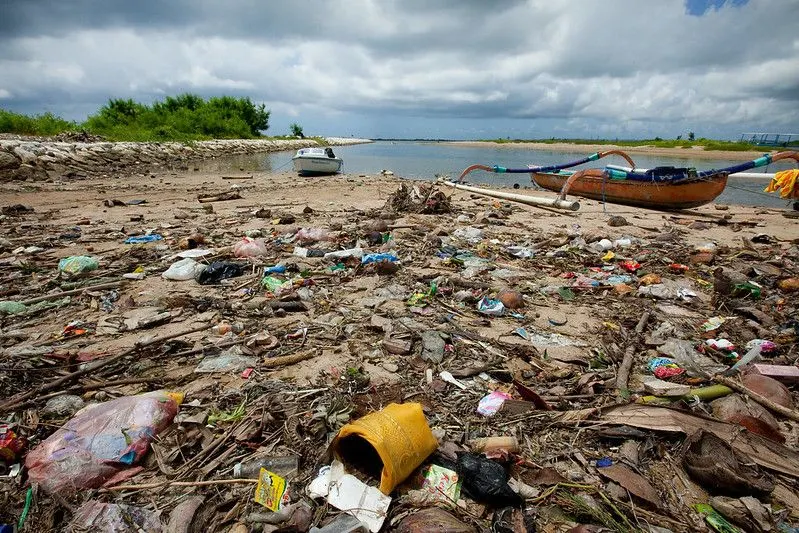Water pollution is the influx of substances into groundwater or into lakes, waterways, rivers, and oceans where the substances slow down the beneficial use of water or the normal functioning of regulatory systems. Water pollution can likewise refer to the energy contribution to the water body by the type of radiation or power, regardless of the contribution of substances such as manufactured compounds, wastes, or microorganisms.
Types and wellsprings of water contamination
Aquifers can be degraded by a variety of substances, including pathogenic microorganisms, usable general waste, fertilizers and plant supplements, destructive sorting compounds, deposits, heat, oil (oil), and radioactive substances. A few kinds of water contamination are examined below. (See Litter Evacuation and Strong Waste Administration for a conversation on the administration of sewage and different sorts of waste produced by human activities.
Domestic sewage
Sewage is a trademark of disease caused by microorganisms and general waste. Because microorganisms are carried through sewage, all wastewater from metropolitan networks and towns can potentially pose an immediate threat to public health. Biodegradable standard substances present a particular threat to water quality. As aggregates are dispersed in wastewater by natural materials and various microorganisms, the dissolved oxygen content in the water is depleted. Biodegradable standard substances present a particular threat to water quality. As aggregates in wastewater are broken down by natural substances and various microorganisms, the dissolved oxygen content of the water is depleted. This disrupts the possibility of lakes and streams where fish and other marine life need high levels of oxygen to thrive.

Solid waste
Inappropriate removal of strong waste is a significant wellspring of water contamination Solid waste includes trash, electronic waste, trash, and development and demolition waste generated by individual, private, business, institutional, and existing activities. This problem is especially uncommon in developing countries. Which can significantly affect the process behind the removal of viable surprise junk. Laws on stepping up or improperly disposing of assets. At certain locations, solid waste is deliberately dumped into water bodies. Land contamination can also lead to water pollution, which is expected to result in waste or other litter being carried into streams by animals, wind, or storms.
Toxic waste
A waste is considered toxic if it is toxic, radioactive, explosive, carcinogenic (causes cancer), mutagenic (damages chromosomes), teratogenic (causes birth defects), or bioaccumulative (i.e., higher up the food chain). (increased concentration at the ends). Sources of toxic chemicals include surface runoff from industrial plants and chemical process facilities (lead, mercury, and chromium), as well as pesticides used on agricultural areas and suburban lawns (chlordane, dieldrin, and heptachlor).
Sediments
Solids block the entrance of sunlight and disturb the organic balance of the water body. In addition, it can disturb the imaginal patterns of fish and other organisms, and when released from suspension, it can disturb essential ecosystems.
Thermal pollution
Heat is seen as water poisoning because it reduces the water’s ability to hold dissolved oxygen and increases the fish’s metabolic rate. Important fish species (such as trout) cannot thrive in water with too little oxygen. A major source of this increase is the discharge of cooling water from power plants into rivers. The discharge water may eventually be 15 °C (27 °F) hotter than normal water. An increase in water temperature due to unnatural climate change can also be seen as a form of thermal pollution.
Oil stream in the lake.
Gasoline oil contamination occurs when the oil is washed off and enters parking garage water reservoirs. Accidental oil slicks are also a source of oil pollution, such as the large haulier Exxon Valdez (which spilt more than 260,000 barrels of oil in Roller Williams Sound, Gold Country, in 1989) and the deep-water Skyline oil rig, which spilt 4 million barrels of oil in the Gulf of Mexico in 2010 (more barrels spilt).
Minamata disease
Minamata, Japan. A fishing port, Minamata was also home to the Nippon Chiso Haryo Company, a manufacturer of chemical fertilizers, carbide, and vinyl chloride. Methylmercury released from the factory contaminates fish and shellfish, causing illness in residents who eat them and birth defects in their children. A sometimes fatal disease was the first to be identified as the cause of industrial pollution of seawater. It sparked worldwide concern and spurred the growth of the environmental movement.
Internal Link – ragdi







